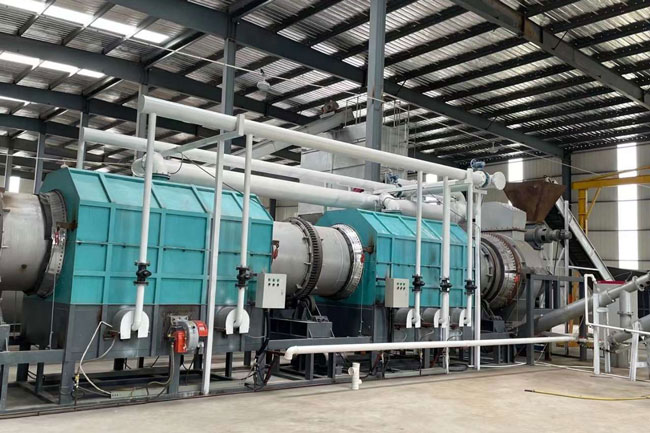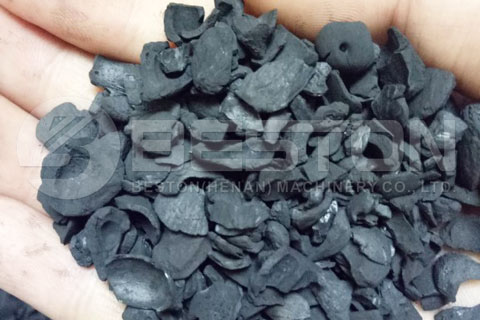The Complete Work Guide to Biomass Pyrolysis Plants
In today’s world, finding sustainable solutions to our energy and environmental challenges is of utmost importance. One such solution gaining significant attention is biomass pyrolysis. Biomass pyrolysis plants offer a promising technology that can convert biomass waste into valuable resources while minimizing environmental impact. In this comprehensive guide, we will delve into the working principles of biomass pyrolysis plant and explore why they matter in our quest for a greener future.

https://www.bestongroup.com/ar/
What is Biomass Pyrolysis?
Biomass pyrolysis is a thermochemical process that involves heating biomass in the absence of oxygen, leading to the decomposition of biomass into various valuable products. The process takes advantage of the natural decomposition of organic materials under high temperature conditions, converting them into biochar, bio-oil, and combustible gases.
How do Biomass Pyrolysis Plants Work?
Biomass pyrolysis plants consist of several key components that work together to transform biomass waste into valuable products:
Feeding System: Biomass waste, such as agricultural residues, forestry waste, or energy crops, is fed into the carbonization furnace through a feeding system. The biomass is typically pre-processed to ensure optimal size and moisture content.
Pyrolysis Reactor: The biomass is then subjected to high temperatures inside a pyrolysis reactor. In the absence of oxygen, the biomass undergoes thermal decomposition, resulting in the release of biochar, bio-oil, and combustible gases.

Charcoal Produced by Biomass Pyrolysis Machine
Condensation System: The hot gases produced during pyrolysis pass through a condensation system, where they are cooled and condensed into liquid form. This liquid, known as bio-oil or pyrolysis oil, contains a range of organic compounds that can be further processed and utilized.
Gas Cleaning System: The combustible gases generated during pyrolysis, including methane, hydrogen, carbon monoxide, and others, are passed through a gas cleaning system. This system removes impurities and pollutants, making the gases suitable for use as fuel or other applications.
Biochar Collection: The solid residue remaining after pyrolysis, known as biochar, is collected for further use. Biochar is a highly porous material that can improve soil fertility, sequester carbon, and enhance water retention in agricultural and environmental applications. View this type of machine: https://www.bestongroup.com/palm-kernel-shell-charcoal-machine/.
Why Do Biomass Pyrolysis Plants Matter?
Waste Management: Biomass pyrolysis plants provide a solution to the growing problem of biomass waste. By converting agricultural residues, forestry waste, and other biomass materials into valuable products, these plants help reduce landfill waste and promote a circular economy.
Renewable Energy: The combustible gases produced during biomass pyrolysis can be utilized as a renewable energy source. These gases can be used to generate heat and electricity, reducing dependence on fossil fuels and contributing to a more sustainable energy mix.
Carbon Sequestration: Biochar, a byproduct of biomass pyrolysis, has excellent carbon sequestration properties. When applied to soil, biochar can retain carbon for an extended period, helping mitigate climate change by reducing greenhouse gas emissions.
Soil Improvement: The application of biochar derived from biomass pyrolysis can improve soil fertility, nutrient retention, and water-holding capacity. It enhances soil structure, promotes microbial activity, and reduces nutrient leaching, leading to increased crop yields and sustainable agriculture.
Economic Opportunities: Biomass pyrolysis plants open up new economic opportunities by creating value-added products from biomass waste. The biochar, bio-oil, and combustible gases generated can be used in various industries, such as agriculture, energy, and manufacturing, fostering economic growth and job creation. Know more factors from this web: https://www.bestongroup.com/ar/.
In conclusion, biomass pyrolysis plants offer a sustainable and efficient way to convert biomass waste into valuable resources. By harnessing the power of thermochemical processes, these plants contribute to waste reduction, renewable energy production, carbon sequestration, soil improvement, and economic development. As we strive for a greener future, biomass pyrolysis plants play a crucial role in shaping a more sustainable and circular economy.
- Use Hookah Charcoal Making Machine to Make Shisha Charcoal Efficiently
- Wood Charcoal Making Machine Brings Solutions to Garden Waste Biomass Management